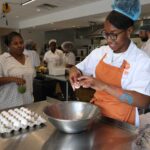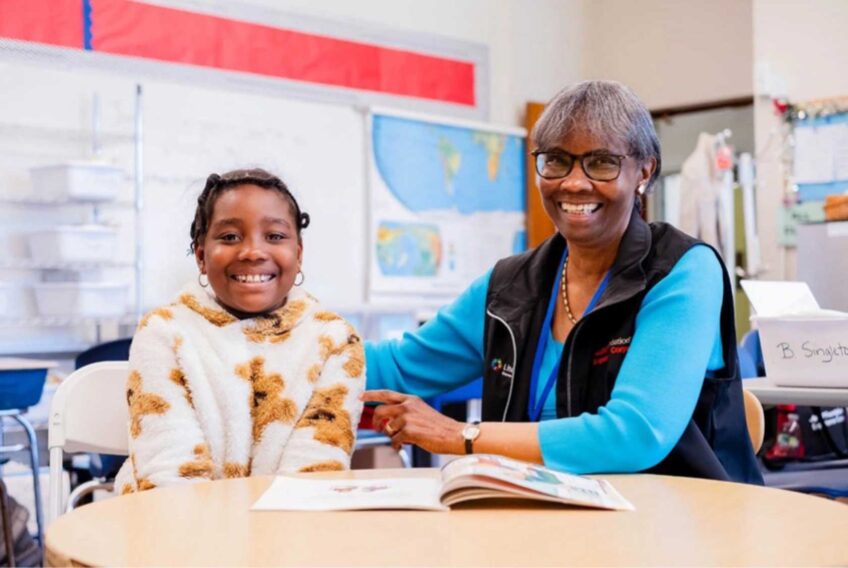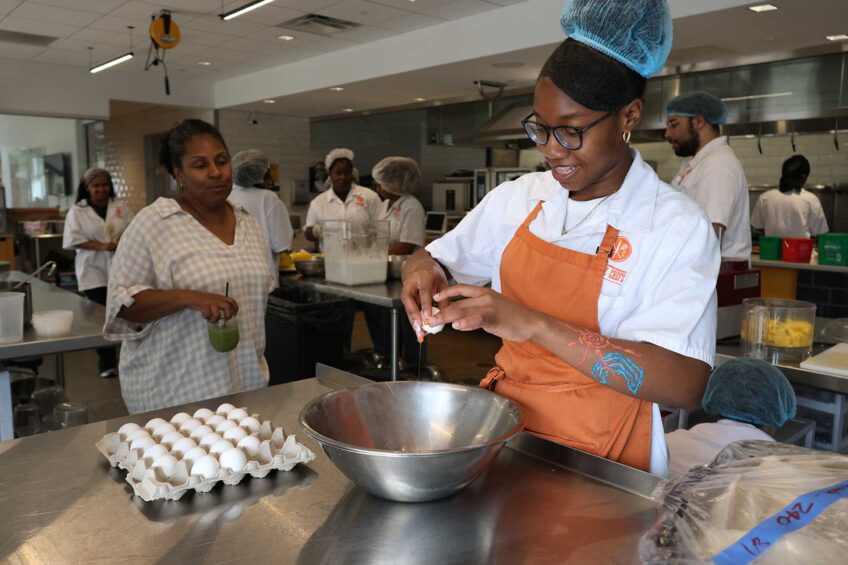The year in science: Challenges, breakthroughs and a quest to address diversity

This year saw continuing health challenges and breakthrough discoveries across the state and a science landscape underlined by growing efforts to address longstanding diversity issues in the sector.
Growing young scientists, diversifying the workforce
Efforts to diversify the workforce in STEM — science, technology, engineering and mathematics — in Massachusetts were widespread this year, as organizations across Greater Boston created or continued workforce development initiatives in areas such as biotechnology and health sciences.
In October, Bioversity, a nonprofit affiliated with the Massachusetts Biotechnology Council (MassBio) opened applications for its first cohort, which will start in January. The biotech workforce development initiative will focus on preparing participants for lab operations jobs through an eight-week course, rather than the four years it might otherwise take to get a degree.

Bioversity Executive Director Zach Stanley addresses attendees at an information session for the new initiative. The program, developed by MassBio, is intended to provide the skills needed for participants with a high school degree to get entry-level lab operations jobs. BANNER PHOTO
And in Nubian Square, the NuSq Life Science Training Center is slated to set aside about 30,000 square feet for lab and training space as part of NuSq Ascends, a development aimed at increasing arts, culture and opportunities in the area.
Efforts also spilled out to younger Bostonians. The NuSq Life Science Training Center partnered with Roxbury Community College to run a summer program for 30 Boston-area high schoolers focused on exposure to 10 STEM fields.
The Arnold Arboretum ran its own summer program, offering, for the second year, its Arboretum Young Scientists Program, with free daily lessons for a cohort of about 15 Boston Public Schools students focused on the science of growing things.

Nancy Sableski (right), Arnold Arboretum manager of children’s education, hands out bug boxes for students to examine insects in the Hemlock Hill ecosystem during the Arboretum Young Scientists Program. BANNER PHOTO
“There’s certainly a push for more students of color in STEM, and oftentimes, we quickly envision that as biological sciences that are more cell biology or chemistry, or studying physics — but the space that is even more sparse of Black and brown students and people of color is ecology and botany science,” said Kareen Wilkinson, who served as coordinator of the Arboretum’s program.
The RCC program also included nature and environmental science components.
Connecting all the efforts was recognition that the problems are not going to be solved by any one group.
That’s why MassBioEd launched its Life Sciences Career Hub, a hybrid digital and in-person system to connect people from lower-income communities or communities of color with STEM jobs or workforce development programs.
The American City Coalition’s Roxbury Worx program does similar work, focused specifically on Roxbury, Dorchester and Mattapan.
“There are people in this neighborhood who are looking for work, they just need opportunity,” said the Rev. Willie Bodrick II, TACC’s president and CEO, at the Roxbury Worx convention in November.
Those efforts come as the state sees limited progress in increasing racial diversity in the field. A 2023 diversity report from MassBio found that people of color made up 14% of the biotechnology workforce, about the same as in 2021 when last reported by the group, and less than half of their 32% share of the state population.
But addressing that disparity could be the next big step in closing the wealth gap in Boston, said Richard Taylor, who leads the upcoming NuSq Life Science Training Center in Roxbury.
“I believe … the civil rights issue of Boston today is getting folks to get involved in the life science industry,” Taylor said in an interview in August. “Otherwise, we’ll never deal with income inequality and narrow the wealth gap.”
Health care disparities addressed, breakthroughs achieved
This year also saw persisting health challenges facing Black communities.
In June, the state’s Department of Public Health released statistics around opioid-related overdose deaths in Massachusetts in 2022. It found that the number of deaths rose by 2.5% over the previous year. The rate of Black residents in the state who died from a confirmed opioid-related overdose accounted for the largest increase.
Concerns around potential harmful effects of Black hair care products also persisted. In July, at the national NAACP convention, delegates passed a resolution on educating more Black women about the link between hair relaxers and uterine cancer.
But the challenges that arose in 2023 aren’t without efforts to solve them.
RIZE Massachusetts, a nonprofit focused on addressing the opioid crisis, awarded $883,000 in grants to five nonprofits across the state working to close racial disparities in the crisis’ impact.

Greg Davis runs Metro Boston Alive, a substance abuse resource center near Nubian Station in Roxbury. The center received a grant from RIZE Massachusetts partnership with Mass General Brigham to bring health care and education to residents. BANNER PHOTO
In Nubian Square, the organization Metro Boston Alive received one such grant in partnership with Mass General Brigham to bring health care and education to residents locally. The day shelter Women’s Lunch Place also received a RIZE grant to hire a recovery navigator to help guide and inspire individuals into treatment.
And the Dimock Center, which touts a continuum of care for those in recovery from addiction, broke ground in October on a facility to fill a gap in their offerings. A new clinical stabilization services program for men will serve as the step between detoxification clinics and a residential phase of treatment. When it opens, it will be the only program offering services like it within the city of Boston.
At the Harvard T.H. Chan School of Public Health, researchers dug into numbers around the availability of harmful hair care products by neighborhood to draw attention to the issue and put focus on the hair care industry itself.
Researchers also found new treatments for one longstanding health challenge facing Black communities. The U.S. Food and Drug Administration this month approved the first gene therapies to treat sickle cell disease in the United States.

Vertex Pharmaceuticals in Boston developed Casgevy, one of the FDA-approved sickle cell treatments. PHOTO: VERTEX PHARMACEUTICALS
Advocates like Jacqueline Haley, executive director of Massachusetts Sickle Cell Association, voiced concerns about side effects and hefty price tags for the treatments — of the two treatments, without insurance one costs $2.2 million and the other $3.5 million — but ultimately hailed them as “really exciting news” for the sickle cell disease community.
Dr. Bill Hobbs, vice president of clinical development for hematology at Vertex Pharmaceuticals, which produced one of the treatments, said he hopes the approval might have a broader impact.
“This is a turning point, that we are no longer going to be in the era where we ignore these diseases because the patient population isn’t a common one that we often think about or spend resources on,” Hobbs said. “The meaning of this one for the broader African American community is huge.”






